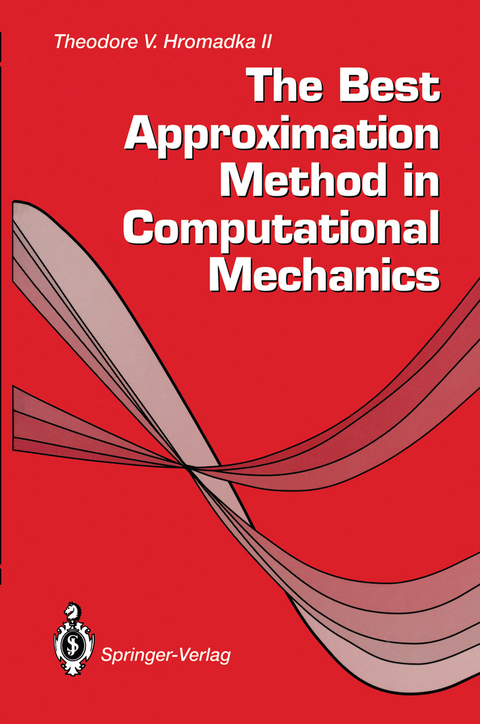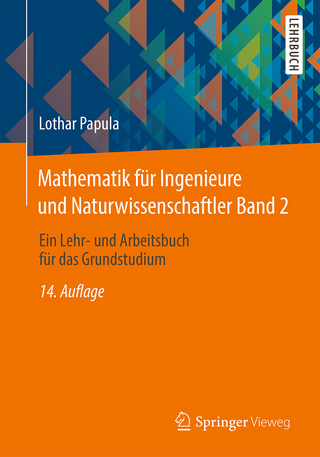
The Best Approximation Method in Computational Mechanics
Springer London Ltd (Verlag)
978-1-4471-2022-3 (ISBN)
With the overwhelming use of computers in engineering, science and physics, the approximate solution of complex mathematical systems of equations is almost commonplace. The Best Approximation Method unifies many of the numerical methods used in computational mechanics. Nevertheless, despite the vast quantities of synthetic data there is still some doubt concerning the validity and accuracy of these approximations. This publication assists the computer modeller in his search for the best approximation by presenting functional analysis concepts. Computer programs are provided which can be used by readers with FORTRAN capability. The classes of problems examined include engineering applications, applied mathematics, numerical analysis and computational mechanics. The Best Approximation Method in Computational Mechanics serves as an introduction to functional analysis and mathematical analysis of computer modelling algorithms. It makes computer modellers aware of already established principles and results assembled in functional analysis.
1 Topics in Functional Analysis.- 1.0 Introduction.- 1.1 Set Theory.- 1.2 Functions.- 1.3 Matrices.- 1.4 Solving Matrix Systems.- 1.5 Metric Spaces.- 1.6 Linear Spaces.- 1.7 Normed Linear Spaces.- 1.8 Approximations.- 2 Integration Theory.- 2.0 Introduction.- 2.1 Reimann and Lebesgue Integrals: Step and Simple Functions.- 2.2 Lebesgue Measure.- 2.3 Measurable Functions.- 2.4 The Lebesgue Integral.- 2.5 Key Theorems in Integration Theory.- 2.6 Lp Spaces.- 2.7 The Metric Space, Lp.- 2.8 Convergence of Sequences.- 2.9 Capsulation.- 3 Hilbert Space and Generalized Fourier Series.- 3.0 Introduction.- 3.1 Inner Product and Hilbert Space.- 3.2 Best Approximations in an Inner Product Space.- 3.3 Approximations in L2(E).- 3.4 Vector Representations and Best Approximations.- 3.5 Computer Program.- 4 Linear Operators.- 4.0 Introduction.- 4.1 Linear Operator Theory.- 4.2 Operator Norms.- 4.3 Examples of Linear Operators in Engineering.- 4.4 Superposition.- 5 The Best Approximation Method.- 5.0 Introduction.- 5.1 An Inner Product for the Solution of Linear Operator Equations.- 5.2 Definition of Inner Product and Norm.- 5.3 Generalized Fourier Series.- 5.4 Approximation Error Evaluation.- 5.5 The Weighted Inner Product.- 5.6 Considerations in Choosing Basis Functions.- 6 The Best Approximation Method: Applications.- 6.0 Introduction.- 6.1 Sensitivity of Computational Results to Variation in the Inner Product Weighting Factor.- 6.2 Solving Two-Dimensional Potential Problems.- 6.3 Application to Other Linear Operators.- 6.4 Computer Program: Two-Dimensional Potential Problems Using Real Variable Basis Functions.- 6.5 Application of Computer Program.- 7 Solving Potential Problems using the Best Approximation Method.- 7.0 Introduction.- 7.1 The Complex Variable Boundary Element Method.-7.2 Mathematical Development.- 7.3 The CVBEM and W?.- 7.4 The Space W?A.- 7.5 Applications.- 7.6 Computer Program: Two-Dimensional Potential Problems using Analytic Basis Functions (CVBEM).- 7.7 Modelling Groundwater Contaminant Transport.- 7.8 Three Dimensional Potential Problems.- 8 Applications to Linear Operator Equations.- 8.0 Introduction.- 8.1 Data Fit Analysis.- 8.2 Ordinary Differential Equations.- 8.3 Best Approximation of Function.- 8.4 Matrix Systems.- 8.5 Linear Partial Differential Equations.- 8.6 Linear Integral Equations.- References.- Appendix A Derivation of CVBEM Approximation Function.- Appendix B Convergence of CVBEM Approximator.- Appendix C The Approximate Boundary for Error Analysis.
| Zusatzinfo | XII, 250 p. |
|---|---|
| Verlagsort | England |
| Sprache | englisch |
| Maße | 155 x 235 mm |
| Themenwelt | Mathematik / Informatik ► Mathematik ► Algebra |
| Mathematik / Informatik ► Mathematik ► Angewandte Mathematik | |
| Naturwissenschaften ► Physik / Astronomie ► Mechanik | |
| Technik | |
| Schlagworte | Applied mathematics • Computational Mechanics • Numerical Methods |
| ISBN-10 | 1-4471-2022-1 / 1447120221 |
| ISBN-13 | 978-1-4471-2022-3 / 9781447120223 |
| Zustand | Neuware |
| Haben Sie eine Frage zum Produkt? |
aus dem Bereich


